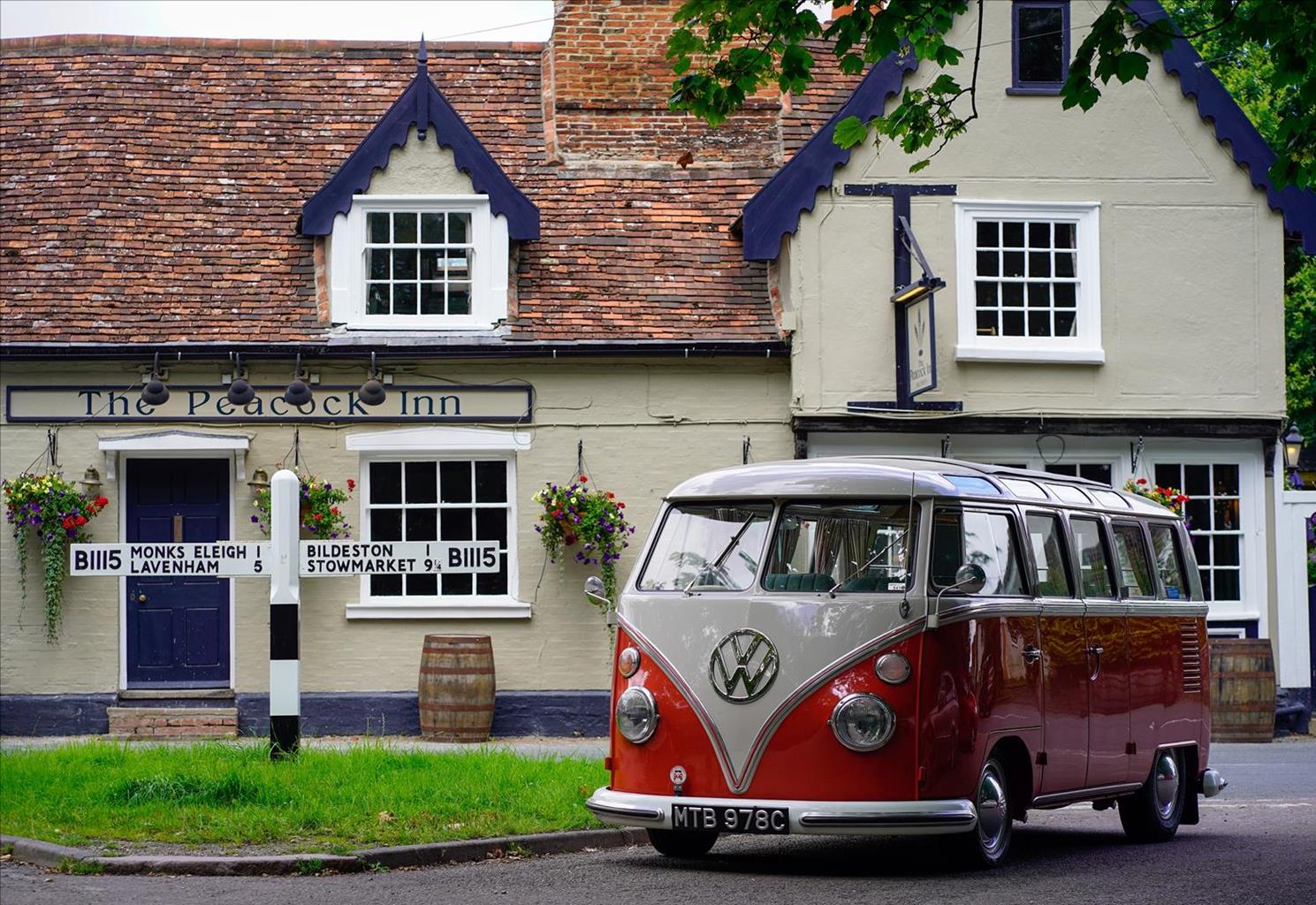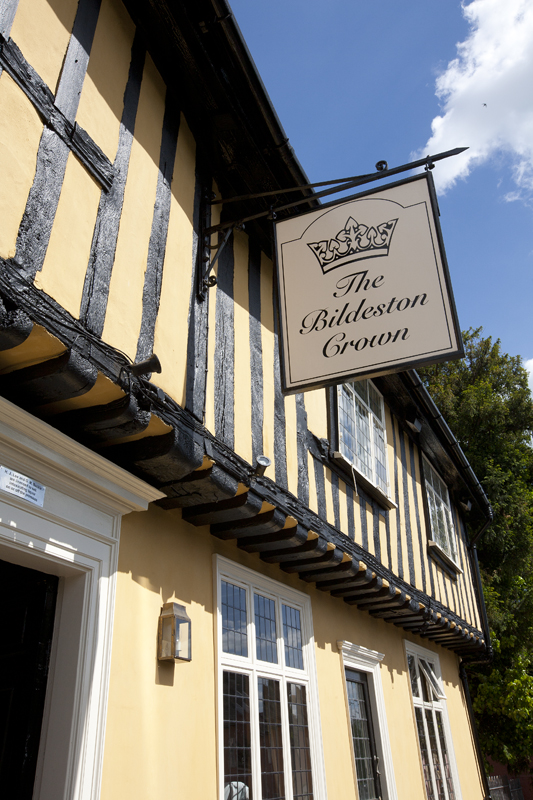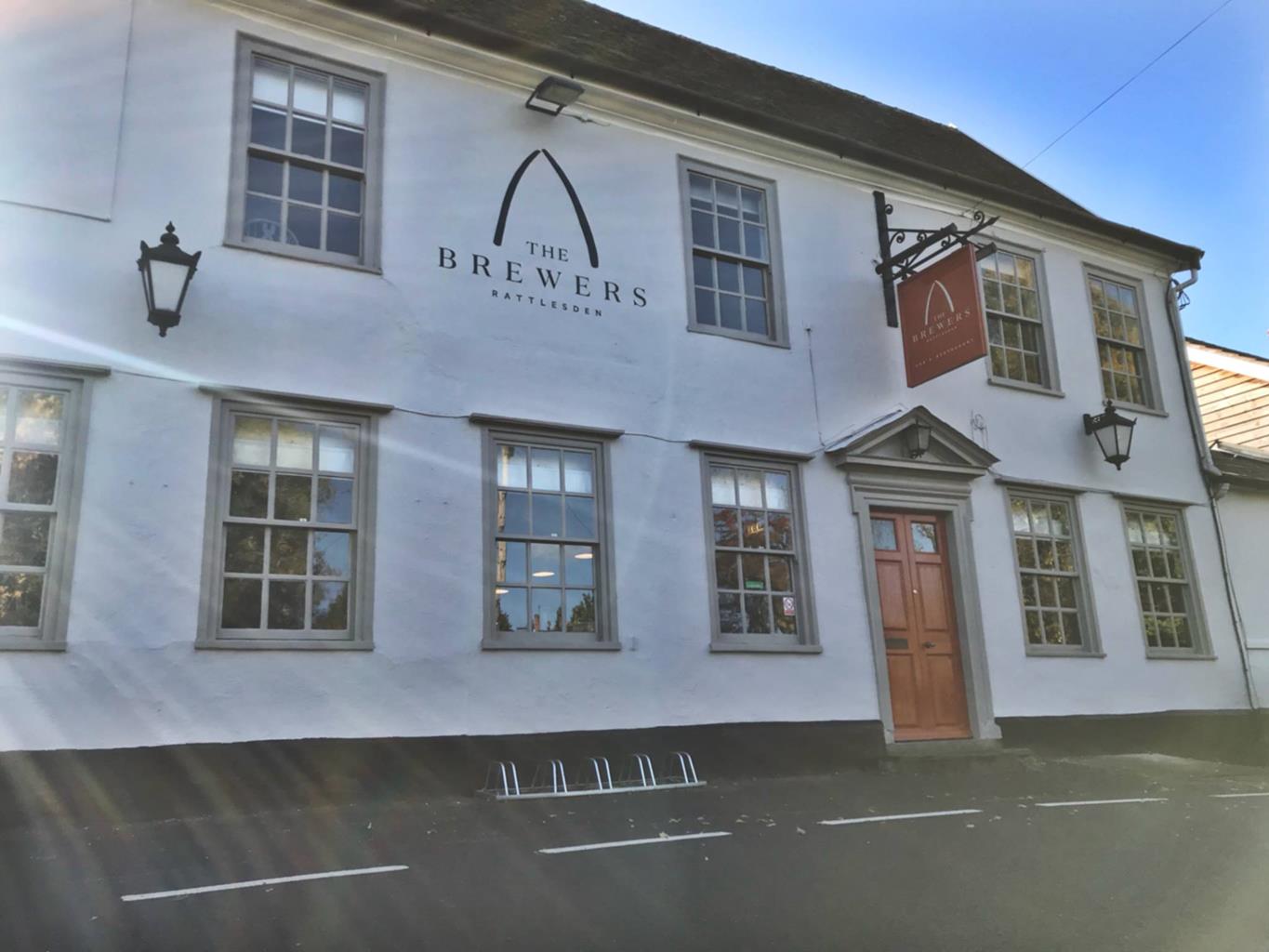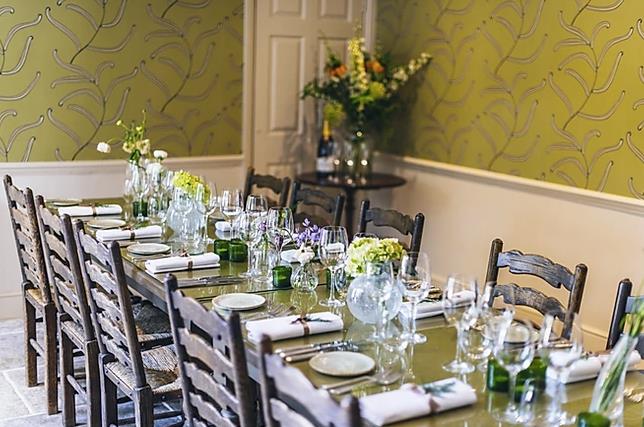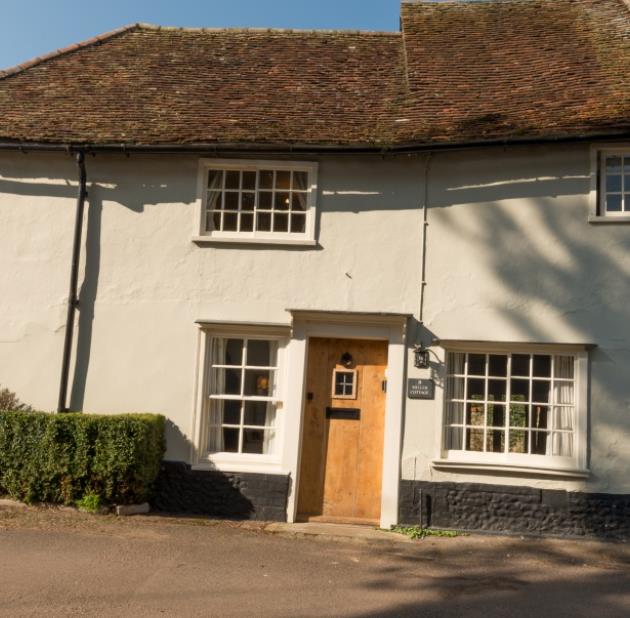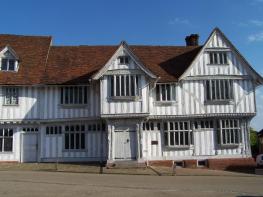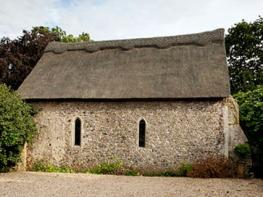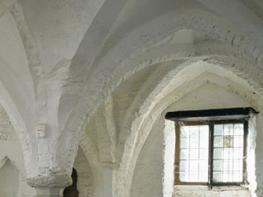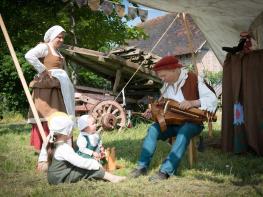The Peacock Inn is a lovely 14th-century timber-framed inn, situated on the north shore of the…
From St Mary's to St Mary's and back

A loop taking in two fine churches and some of Suffolk’s hilliest farmland.
3.5 miles (5.7kms)
About the walk
This is the story of two Saint Marys. Kettlebaston’s St Mary has to make do with having her own church but nothing more. In Preston, however, things are different. Mary there gets not only a church but also has her monicker incorporated into the name of the village. However, this is unlikely to have been on account of any extreme devotion on the part of the good people of Preston but the fact that their village’s name is so common (there are 24 places called simply ‘Preston’ in England alone) that adding ‘St Mary’ after it helps to avoid confusion.
St Mary’s, Kettlebaston
Visitors pass through an impressive archway of yews to enter St Mary’s churchyard. The church itself somehow seems to have had the Reformation bypass it completely, as evidenced by the niche from which the patron blithely greets all comers. At the back of the church are some casts of the 14th-century Kettlebaston Alabasters, depicting the Coronation of Mary, the Annunciation, Ascension and Holy Trinity. The originals were discovered in the chancel wall in 1864 and are now in the British Museum in London. Among the other treasures is the 20th-century rood screen with portraits of English saints.
Preston St Mary’s
Perched on the western slope of the valley of the River Brett, there has been a community living at Preston St Mary since at least AD43, with various coins and artefacts from the Roman occupation having been found here. The yew tree in the churchyard is a mere 800 or so years old though that still means it pre-dates the church, which was erected in the 14th and 15th centuries. The porch, of flint flushwork, is one of the finest in the county but it’s what’s inside the church that really springs a surprise. Up on the north wall by the door are two oak triptychs painted (or possibly merely commissioned) by Robert Ryece III of Preston Hall (1555-1638). One depicts the coat of arms of Queen Elizabeth I which appear to have been painted over the arms of Edward VI, the child king who died in 1553. It is one of only three such triptychs in the country. The other triptych is a lavish rendering of the Ten Commandants in gold on a deep dark blue.
Kettlebaston’s village sign
Opposite the church, the village sign features two crossed sceptres – one gold, the other ivory – topped by a pair of doves. This is a reference to William de la Pole, Marquis of Suffolk, who was granted the manor of Kettlebaston by Henry VI on condition that he bear a sceptre (gold for a king, ivory for a queen) at all royal coronations. As conditions go, it can’t have been all that onerous a one to abide by.
Walk directions
Walk into St Mary's churchyard and through it to turn right behind the church, cross a meadow and pass around a stile to reach a lane. Turn left and walk along this lane for 0.5 miles (800m) between stud and cattle farms.
Just before the entrance to High House Farm, turn left on to a field-edge path running beside a ditch. At the foot of the field, cross a wooden bridge to join a path on the other side of the stream. Follow this path round to the right between paddocks then go through a gate and walk uphill on a concrete lane to College Farm. After passing the farm, the lane becomes a road leading into Preston St Mary. Look for a gate in the hedge on your left to enter St Mary’s churchyard. After looking at the church, return to the road. Turn left and at the T junction either turn left to refresh yourself at the Six Bells or turn right towards Whelp Street.
When you come to a T-junction with Whelp Street go straight on over a stile through a gap in the hedge and a 'Beware Pig' sign. Step over a pig guard to cross a footbridge and climb steps to a field. Keep straight ahead to cross the field, joining a hedge on the other side which you follow without changing direction with the hedge on your left-hand side. Continue along this hedge to the right and then turn left to a T-junction with a wide grassy path. Turn left along it. Eventually the track becomes a tarmac lane leading to a road junction. Keep straight ahead, cross a bridge and climb the hill into Kettlebaston to arrive at St Mary's Church and the start of the walk.
Additional information
Footpaths, country lanes, 1 stile
Rolling farmland, attractive small villages, river
On lead on lanes
OS Explorer 211 Bury St Edmunds & Stowmarket and 211 Sudbury, Hadleigh and Dedham Vale
On street near church in Kettlebaston
None on route
WALKING IN SAFETY
Read our tips to look after yourself and the environment when following this walk.
Find out more
Also in the area
About the area
Discover Suffolk
Suffolk is Constable country, where the county’s crumbling, time-ravaged coastline spreads itself under wide skies to convey a wonderful sense of remoteness and solitude. Highly evocative and atmospheric, this is where rivers wind lazily to the sea and notorious 18th-century smugglers hid from the excise men. John Constable immortalised these expansive flatlands in his paintings in the 18th century, and his artwork raises the region’s profile to this day.
Walking is one of Suffolk’s most popular recreational activities. It may be flat but the county has much to discover on foot – not least the isolated Heritage Coast, which can be accessed via the Suffolk Coast Path. Southwold, with its distinctive, white-walled lighthouse standing sentinel above the town and its colourful beach huts and attractive pier features on many a promotional brochure. Much of Suffolk’s coastal heathland is protected as a designated Area of Outstanding Natural Beauty and shelters several rare creatures including the adder, the heath butterfly and the nightjar. In addition to walking, there is a good choice of cycling routes but for something less demanding, visit some of Suffolk’s charming old towns, with streets of handsome, period buildings and picturesque, timber-framed houses.
Nearby stays
Restaurants and Pubs
Nearby experiences
Recommended things to do
Why choose Rated Trips?
Your trusted guide to rated places across the UK
The best coverage
Discover more than 15,000 professionally rated places to stay, eat and visit from across the UK and Ireland.
Quality assured
Choose a place to stay safe in the knowledge that it has been expertly assessed by trained assessors.
Plan your next trip
Search by location or the type of place you're visiting to find your next ideal holiday experience.
Travel inspiration
Read our articles, city guides and recommended things to do for inspiration. We're here to help you explore the UK.

